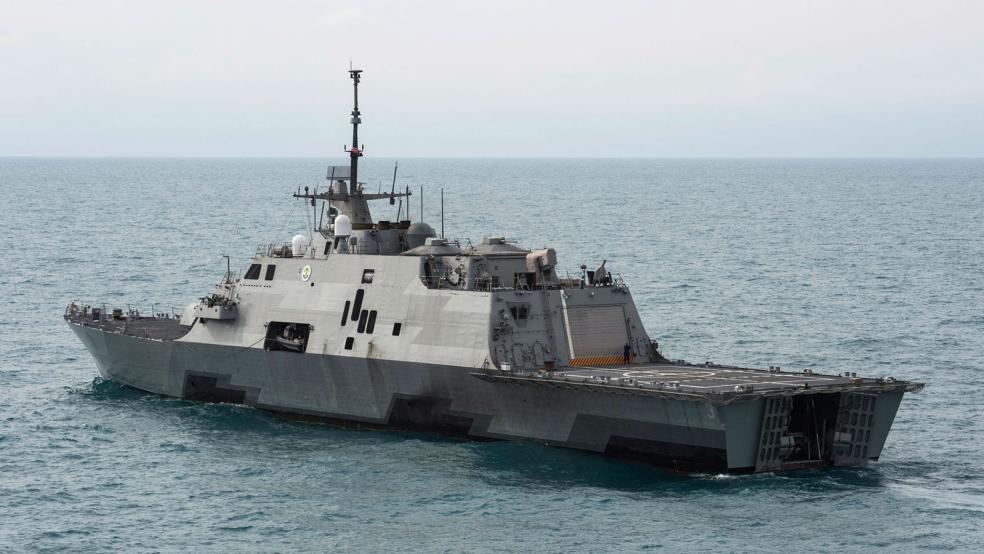The fight between the Defense Department and the Navy over the service’s $23 billion Littoral Combat Ship program is heating up just as the Pentagon prepares to release its budget for the next fiscal year.
The fracas revolves around a recent report by the Pentagon’s chiefs weapons tester that examined the ship’s performance in two exercises last year and found it had difficulty repelling smaller vessels, like the kind favored by Iran’s navy and other potential opponents.
Related: Why the Navy’s New Combat Ship May Fail Against Real-World Threats
The flaw doesn’t bode well for the LCS, which is meant to operate along coastlines and shallow waters and is likely to encounter such small craft.
The test chief’s criticism led to an unidentified Navy official crying foul to Breaking Defense.
The LCS “defeated the adversary, right?” the Navy official asked. “How nitpicking is that to criticize, ‘oh, some of [the enemy boats] got too close.’ Oh, c’mon. I would call baloney on that.”
But a report by the weapons office provided to The Fiscal Times says the Navy official “was apparently not familiar with the basis for the test and many of his statements are incorrect or not related to what was being tested.”
Related: The Navy’s New $362 Million Ship Needs a Tow to Get Home
The document says the Navy issued a memo in the past that acknowledged the LCS lacked a surface-to-surface missile to destroy an important class of would-be attackers. The same memo also defined the artificially small distances used the exercise, according to the Director, Operational Test and Evaluation (DOT&E).
“In reality, there are several threat weapons that could hit LCS from an even greater distance, but DOT&E accepted the Navy’s defined success criteria to assess these events,” the paper states. “Hence, even though the ship was able to eventually repel the simulated attack, this was after the targets had successfully penetrated the Navy’s prescribed stand-off range, which did not meet the Navy’s success criteria.
“In a real battle, there would be a good chance LCS might have sustained damage at that point that could have affected its subsequent capability to successfully repel the attack,” it adds.
The paper goes on to rebut every charge made by the Navy official, including the correct number of ships used in the test, and pointing out the exercise was run by the Navy, not the Pentagon.
Related: Why the Pentagon Is Cutting Back Orders on Its New Combat Ship
The bureaucratic infighting is the latest sign that Defense Secretary Ash Carter and his advisers have it out for the LCS, which has been plagued by cost overruns and technical glitches and faces serious questions about its survivability.
In December, Carter sent a strongly-worded letter to the secretary of Navy basically ordering him to cut the service’s purchase from 52 to 40 of the $362 million-a-piece ships and stop production of one of the boat’s two designs so that the money could be used for other programs, such as the F-35 Joint Strike Fighter.
“To put more money in submarines, Navy fighter jets, and a lot of other important areas, one tradeoff we made was to buy only as many Littoral Combat Ships as we really need,” Carter said Tuesday in a speech previewing next week’s budget release.
“This is part of a broader effort in our budget to focus the Navy on having greater lethality and capability that can deter and defeat even the most high-end future threats,” he added.
President Obama’s fiscal 2017 budget plan will request $582.7 billion in funding for the Pentagon, including $8.1 billion for submarines, some of which could come from LCS coffers.





